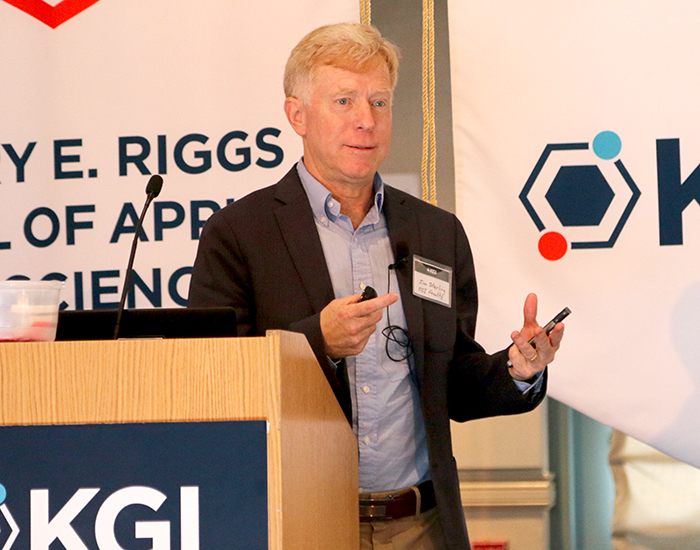Keck Graduate Institute Professor Dr. James Sterling, with an Australian team of scientists, recently published The role of the cell surface glycocalyx in drug delivery to and through the endothelium in Advanced Drug Delivery Reviews. The paper analyzes key findings on drug delivery methods, focusing on overcoming challenges presented by the blood-tissue barrier.
Glycocalyx refers to the sugar—or carbohydrate—coated surface of mammalian cells. Drugs must first pass through the glycocalyx to reach the endothelial cells lining the blood vessels and thus escape the bloodstream.
“As it turns out, this sugar layer is quite thick, and it looks kind of like a forest,” Sterling said. “It has denser sugar molecules at the surface and bigger molecules extending out from the surface. So as a drug is coming along through the blood, it first has to go through the canopy, and then it has to get through the undergrowth, and then it has to get into the soil—in this case, the soil is the endothelial cells.”
This “forest” is covered in negative electrical charges. Thus, many strategies for drug delivery focus on using positively charged molecules to adhere to the glycocalyx.
“However, if there are too many positive charges, then the drug might stick to the ‘forest’ and never get down into the cells on the surface,” Sterling said.
Therefore, some strategies combine positively charged molecules with those containing more neutral charges. The paper analyzes these strategies and different types of molecules that can be used as drug delivery vehicles.
The glycocalyx primarily presents issues for large molecule drugs or biologics, such as the monoclonal antibodies produced by companies like Amgen. Small molecule drugs are usually simple with a well-defined structure. They can pass through the carbohydrate layer more easily than biologics, which are complex and typically composed of more than 1,300 amino acids.
Studying the glycocalyx can also shed greater awareness on how many viruses operate, including SARS-CoV-2.
“In the news, we often hear that the spike protein of the SARS virus enters the cell by using this receptor called the ACE2 receptor,” Sterling said. “But before it ever gets there, it has to get through this ‘forest’ of sugars. And it does so by using mutations that specifically adhere to the glycocalyx, using its positive charges to stick to the negative charges on the cell surface.”
This process mirrors the mechanism that has recently revolutionized the delivery of messenger RNA (mRNA) used in the Moderna and Pfizer-BioNTech COVID-19 vaccines.
“SARS-CoV-2 vaccines encode the production of the spike protein itself through the mRNA, which is delivered to our cells through the glycocalyx and then into the cytoplasm, where our cellular machinery can see that mRNA and start creating proteins to activate an immune response,” Sterling said.
As with other drug delivery systems, the mRNA must navigate through the glycocalyx without getting destroyed.
“Thus, strategies that recognize the transport to and through the glycocalyx will be beneficial in improving delivery systems for vaccines and gene therapy as well,” Sterling said.
For the paper, Sterling collaborated with Professor Megan Lord of the University of New South Wales—the senior author and glycobiology expert—and Lord’s research team, including Dr. Lu Fu and Dr. Ha Na Kim, and Synedgen CEO Dr. Shenda Baker. Synedgen is a therapeutics company that specifically targets the glycocalyx to treat diseases such as ulcerative colitis and other disorders of mucosal surfaces such as the eyes, lungs, and the inside of the mouth.
Sterling emphasizes that glycobiology is a rapidly changing field.
“Within the past year, we learned from a Stanford study that the glycocalyx forest of glycolipids and glycoproteins also includes glycoRNA, a biomolecule previously considered nonexistent,” Sterling said. “Each such discovery opens doors to understanding human health, disease, and the development of new therapeutics.”
